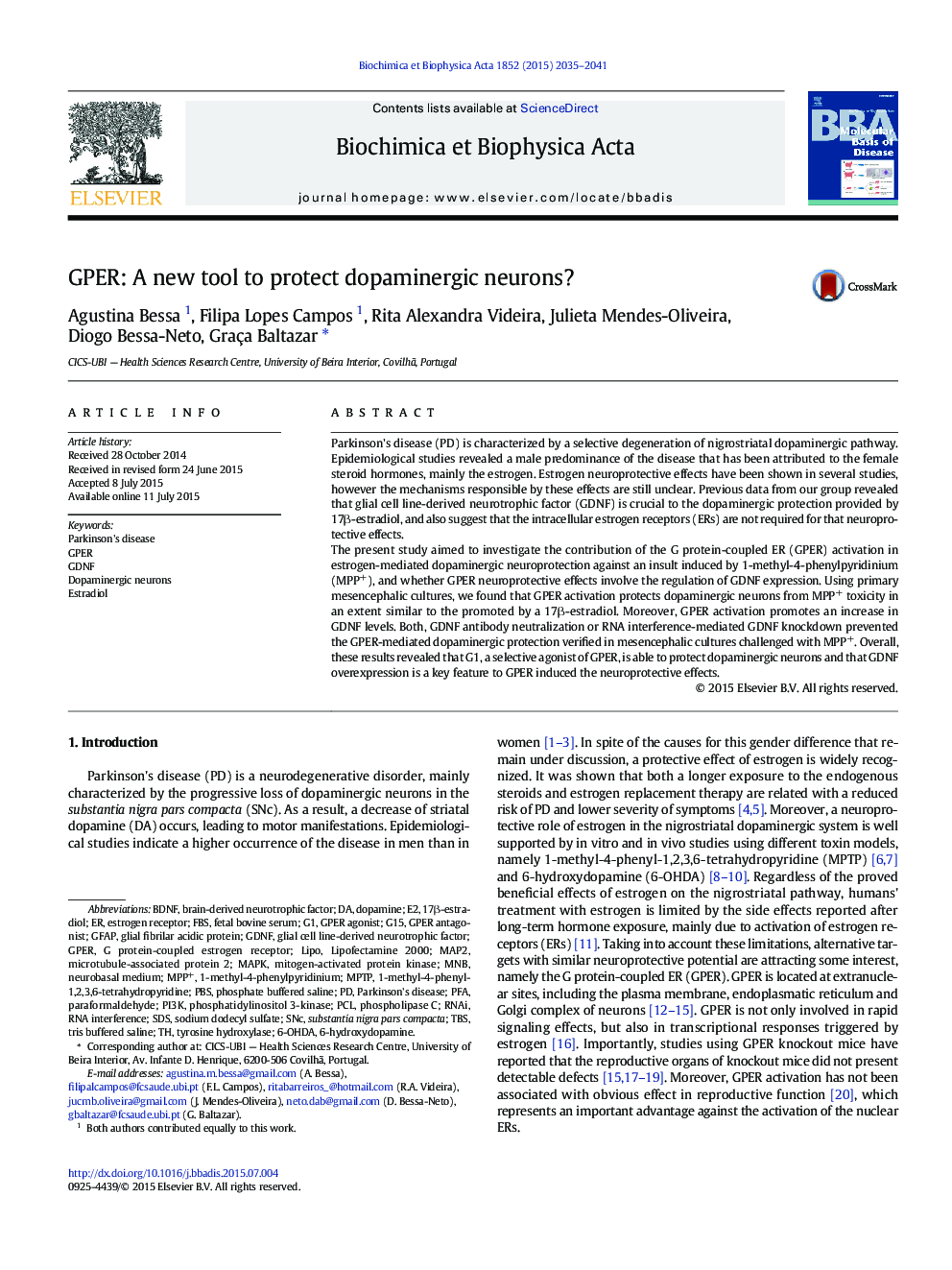| Article ID | Journal | Published Year | Pages | File Type |
|---|---|---|---|---|
| 1904586 | Biochimica et Biophysica Acta (BBA) - Molecular Basis of Disease | 2015 | 7 Pages |
•GPER activation protects dopaminergic neurons from MPP+ toxicity.•GPER activation promotes an increase in GDNF levels.•GDNF overexpression is crucial to GPER induced the neuroprotective effects.
Parkinson's disease (PD) is characterized by a selective degeneration of nigrostriatal dopaminergic pathway. Epidemiological studies revealed a male predominance of the disease that has been attributed to the female steroid hormones, mainly the estrogen. Estrogen neuroprotective effects have been shown in several studies, however the mechanisms responsible by these effects are still unclear. Previous data from our group revealed that glial cell line-derived neurotrophic factor (GDNF) is crucial to the dopaminergic protection provided by 17β-estradiol, and also suggest that the intracellular estrogen receptors (ERs) are not required for that neuroprotective effects.The present study aimed to investigate the contribution of the G protein-coupled ER (GPER) activation in estrogen-mediated dopaminergic neuroprotection against an insult induced by 1-methyl-4-phenylpyridinium (MPP+), and whether GPER neuroprotective effects involve the regulation of GDNF expression. Using primary mesencephalic cultures, we found that GPER activation protects dopaminergic neurons from MPP+ toxicity in an extent similar to the promoted by a 17β-estradiol. Moreover, GPER activation promotes an increase in GDNF levels. Both, GDNF antibody neutralization or RNA interference-mediated GDNF knockdown prevented the GPER-mediated dopaminergic protection verified in mesencephalic cultures challenged with MPP+. Overall, these results revealed that G1, a selective agonist of GPER, is able to protect dopaminergic neurons and that GDNF overexpression is a key feature to GPER induced the neuroprotective effects.
